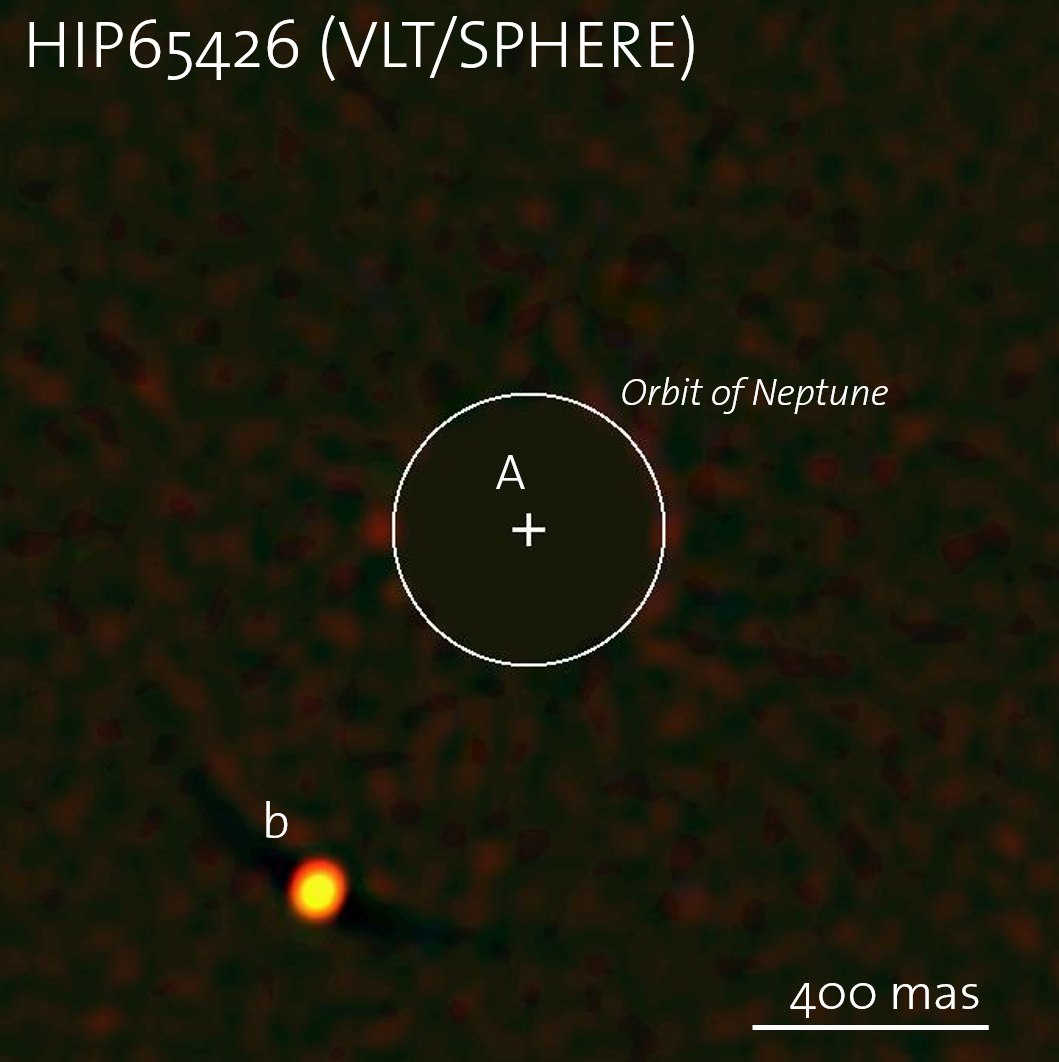First discovery of an exoplanet with SPHERE/VLT

Picture taken by SPHERE, showing the planet made visible after the star has been hidden by the coronograph (A).
An international team of astronomers, including members of the University of Geneva (UNIGE), Switzerland, discovered an exoplanet by direct imaging using SPHERE, an instrument designed and developed by a consortium of 12 European institutes on the Very Large Telescope ESO, based in Chile. The instrument, which corrects in real time the terrestrial atmospheric turbulences and occults the light of the star, allows to take a real «photography» of the exoplanet. A result published in the journal Astronomy & Astrophysics this week.
While more than 3600 exoplanets were discovered through indirect methods, only a handful of them could be observed by direct imaging. This is the first time that astronomers have been able to discover a planet directly on a «photography» with SPHERE, an instrument designed and developed by a consortium of 12 European institutes, including the UNIGE Astronomical Observatory.
In order to take this kind of image, SPHERE is equipped with a deformable mirror that corrects 1200 times per second in real time the atmospheric turbulences, and with a coronograph which allows to hide the light of the star and reveals that of the planet. SPHERE is able to detect the signal of a planet up to a million times lower than that of its host star.
Installed on the VLT (Very Large Telescope) in Chile, SPHERE then discovered HIP65426b, an exoplanet located at three times the Earth-Neptune distance from its star, and whose mass is 6 to 12 times higher than that of Jupiter with a temperature in the range of 1200 degrees celsius.
150 times faster than the sun
This planet already triggers the curiosity of astronomers: indeed its star is not surrounded by a disc of matter as it is the case for most young planetary systems. Using HARPS, another Geneva-based design instrument, researchers realized that the HIP65426 was a young star and was turning very fast on itself, about 150 times faster than the Sun. Two elements that raise the question of the formation of the planet HIP65426b.
Two scenarios for a birth
Two scenarios are considered. The first implies that the exoplanet was formed in a disk of gas and dust and, after this disk had dissipated, interacted with other planets to move to its distant orbit. The second suggests that the star and the planet were formed at the same time but one being more massive, the other wasn’t able to reach the end of its accretion of matter and became the planet HIP65426b.
Contact: Stéphane Udry, +41 22 379 24 67
Pierre Bratschi, +41 22 379 2354
6 Jul 2017